- September 19, 2021
- By Reno Jackson
- In Articles, Meta Reports
- No Comment
- 0
Team WildSide Wild Meta Report (September 2021)
Four decks stand at the top of the meta, and two of which are still Warlock's. There is more room for fun and creativity, as long as you can dodge these four decks or counter at least one of them. The meta seems to be in a healthier spot, but a breath of fresh air from the mini-set is still welcomed.
We would like to thank these top legend players who have given us their expert opinions and helped with writing the report: RenoJackson, matSund, Goku, LovelyDuke, Memnarch, ForChrist, Cubyyy, qwerty, jjjjj, Yerna, Ail, Battletagger, SmellyHuffer, Lasagne, and LordXav. Their Twitters are to be listed at the end of the report.
We would like to give a huge shoutout to our patrons for making this possible. If you really like the report and want us to keep going, please consider becoming a Patron here: https://www.patreon.com/thewildside
To get updates on all our future reports, consider joining our Discord server The Wild Side: https://discord.gg/FVZgtVs
Welcome to the second Edition of Team WildSide’s Wild Meta Snapshot for 2021!
In this meta report, we will be going through a tier list of 64 decks we’ve seen frequently on ladder, explain the method of computing the tier list, break down the meta and analyze the decks as detailed as they need to be. In this report, we have included a Meta Ranking and will be further discussing the state of each class in terms of power and diversity. Also, we’re including some WildSide special decklists that were made by none other than our experts!
METHOD
We collected our experts’ opinions through a spreadsheet, where our Top Wild legend players will rate the given decks with a corresponding score from 1 to 4 in increments of 0.5 (with 1 being top Tier 1 and 4 being bottom Tier 4). We then collect the result, standardize and categorize them in 4 different Tiers. This is what they mean:
Tier 0 (Absolute oppression)
The one deck to beat. You either play it or play decks that can beat it.
Tier 1 (Meta-defining)
Highly-optimised decks with extreme raw power that are very well positioned in the meta.
Tier 2 (High-legend viable)
Competitive decks that are not as well-rounded, but can snatch games off of Tier 1 decks or prey on their direct counters.
Tier 3 (Legend-viable)
Fringe decks that can succeed in the right meta, but are either suboptimal or outdated.
Tier 4 (Average)
Decks at a weaker power level that require an extensive understanding to be able to pilot well, but are not recommended for ladder experience.
Tier 5 (Meme)
Decks that aren’t typically played for the purpose of climbing ladder, but still have a decent enough presence to be included in the report.
Within each tier, decks are categorized to either High tier, Mid tier or Low tier to further differentiate their power level.
For Meta Ranking analysis, we allocate points to each deck from Tier 0 to Tier 3 then sum them up. The point system for rating a single deck is as below:
Tier 0: 22
Tier 1: 18 (High), 15 (Mid), 12 (Low)
Tier 2: 9 (High), 7 (Mid), 5 (Low)
Tier 3: 3 (High), 2 (Mid), 1 (Low)
Each deck is also assigned a popularity ranking and a respective coefficient multiplier based on its popularity. The highest multiplier is 12 and the lowest is 7. For example, if Odd Paladin is High Tier 1 and has a multiplier of 12, it will bring the class an additional 216 points.
Therefore, a class can be placed highly on the Ranking system based on one (or both) of these elements: having a few strong decks (deck power) or having many decks (class diversity). If classes share the same score, the class with more top decks will be ranked higher.
REMARKS
Plenty of changes have occurred after United in Stormwind, most of which weren’t exactly well-received by the Wild community. The questlines, which offer streamlined, often straightforward and repetitive gaming experiences, have forced games to end upon Questline completion (usually Turn 5). This has made is so no Control deck, or even Midrange deck, can survive. Decks thriving in the current environment need to activate their kill switch before Turn 5, or stalling so they can activate their ‘late’ combo by around Turn 6 or 7.
We haven’t seen a Tier 0 deck in Wild for a while, but whenever this happens, it always seems to be Gul’dan that takes the cake. The vast majority has singled out Questline Warlocks as the main culprits of this extreme meta. The deck is too well-equipped to deal with anything slower than Aggro Priest, and if the Warlock main finds themselves struggling against hyper-aggro decks, they can always whip out the heavily-teched Combo-Control version.
As such, the most popular non-Warlock decks right now are hyper-aggro and combo with a respectable matchup against Warlocks (Aggro Priest, Ignite Mage, Malygos Druid) and decks that do well against most of these counter decks (Pirate Warrior, Odd Questline Hunter). The power level of Warlock is so high that it pushes most other decks down a notch, leaving the tierlist with an uncharacteristic lack of Tier 1 & 2 decks. It’s bizarre to see an insanely fast Hunter deck is the one having the most resemblance to what can be called ‘Control’ in the current meta, but this experience should serve as a case study as to how drastic a single set of cards can distort the eternal format.
TIERLIST
This is a single screenshot taken from our spreadsheet if you find the tierlist infographics too long (you can open the photo in another tab to see the full-sized picture).
TIER 0
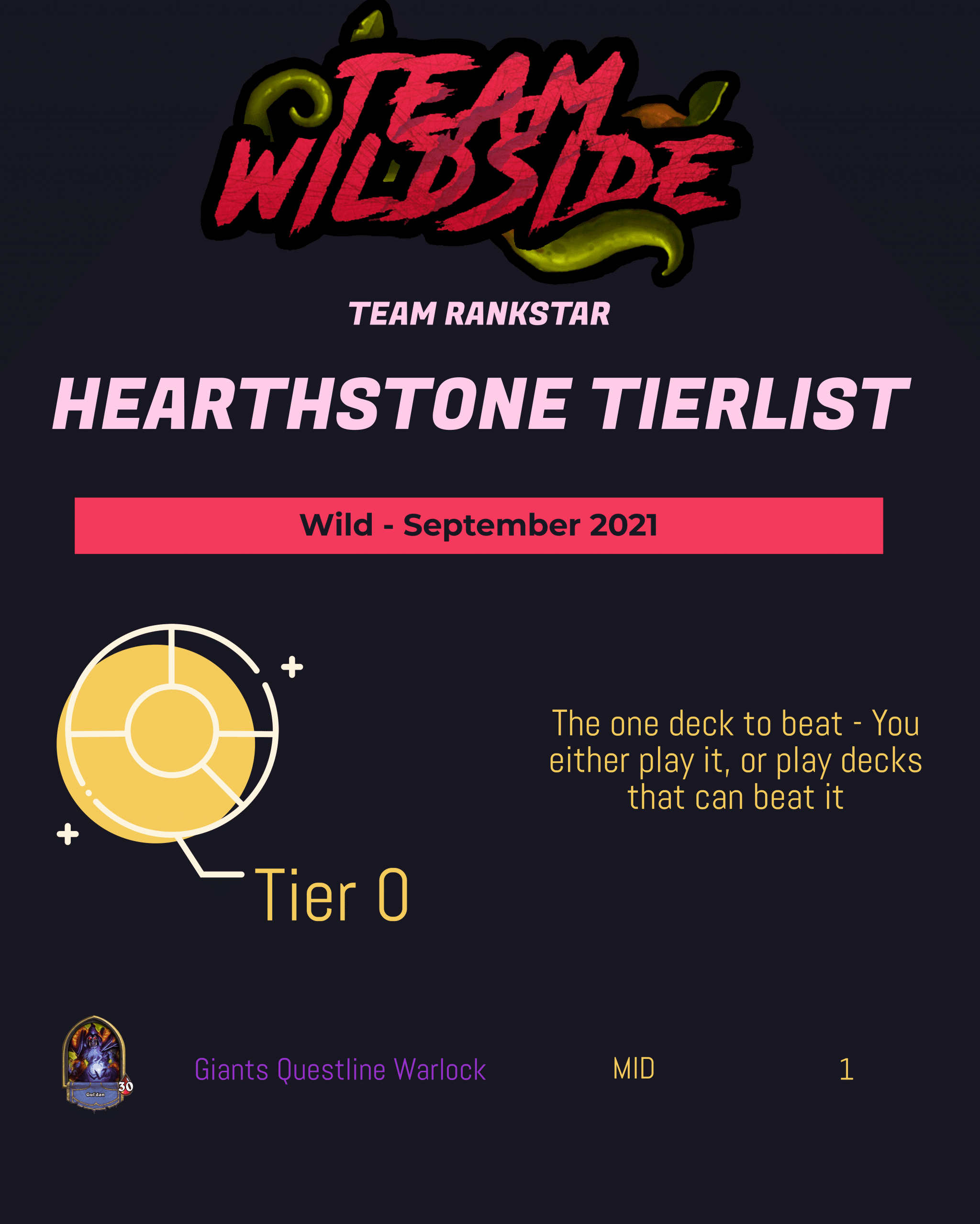
MID
Giants Questline Warlock
Ranked: 1

Giants Questline Warlock is a variant of Questline Warlock which utilizes the traditional Darkglare package in addition to the specialized self-damage package. This midrange deck can overwhelm on board the way Darkglare does, and if that plan fails, it can finish the questline and let Tamsin does the rest: turning self-damage into face damage.



TIER 1
HIGH
Darkglare Warlock
Ranked: 2
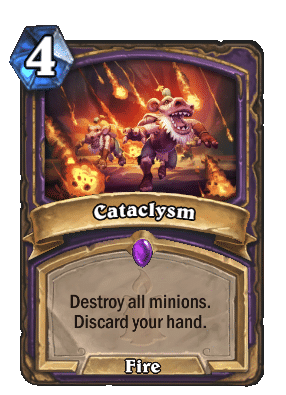
Combo Questline Warlock is a variant of Questline Warlock that focuses solely on completing the questline and turning self-damage into lethal. A number of cards like Crystallizer and Kobold Librarian can quickly ramp up the damage count, while Hand of Gul’dan is played alongside Cataclysm to deal a massive amount of fatigue damage. Naturally, this deck plays plenty of self-sustaining tools and board clears in order to drag the game out.
The Giants aren’t the only bringers of cataclysm. A little weaker than the Giants version, Combo Questline Warlock still finds itself comfortably ahead of the rest of the pack. Defile and Plague of Flames, which was overlooked in the Giants version, are key components to wrestle the board against Aggro, which makes this deck a better bring into Aggro lineups. Armor Vendor and Mistress of Mixtures are included for the same reason.
Needless to say that Rune Mithril Rod is the core of the deck. An absolute tempo beast, the Rod allows the player to play 5 minions and Plague of Flames for 1 mana, executing the Cataclysm kill trigger in a Tamsin turn, and many other insane lines. Against decks like Aggro Shadow Priest, the Warlock player can easily win just by defending. This is a big advantage over the Giants version, but there are certainly trade-offs. The fatigue kill turn comes about 2 to 3 turns slower than pressuring with Giants. Therefore, Questline Warlock is more vulnerable against decks that can skip the board and go for the face like Questlne Hunter or Malygos Druid. For this reason, some Warlock players have incorporated Dirty Rat to rat out Brann, Malygos, and other key combo cards.


LOW
Aggro Shadow Priest
Ranked: 3
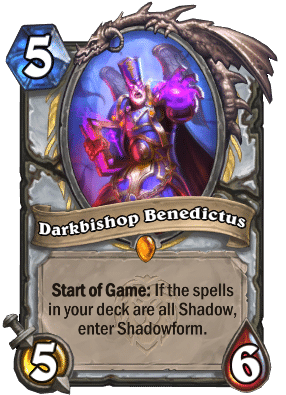
Enabled by Darkbishop Benedictus, Shadow Priest introduces a brand new way of playing Priest following United in Stormwind. Packing a plethora of high-damage cards like Voidtouched Attendant, Mind Blast, and Shadowbomber, the deck can finish the game as early as Turn 2. Popular builds include Pirates to gain early control of the board.
An expansion ago, you’d probably have gotten a good laugh when someone mentioned that Aggro Priest would be the new flagbearer while Reno Priest would vanish from Wild. After an archetype-defining card was printed for the deck and the dark influence of Warlocks seeping into the meta, Benedictus has risen from the shadows as a beacon of hope. As a hyper-Aggro deck with an extremely efficient burn package, Aggro Priest seeks to close out games before Warlocks and slow Combo decks can gain a foothold. A solid game against Warlocks and Mages has kept the deck in Tier 1, but has also made it the #2 enemy of the public.
As mentioned, Voidtouched Attendant has proved to be the damage output this deck needed to push it to viability. Whether you highroll Pirates, Frenzied Felwing, or Mindrender Illucia with a large board, Aggro Shadow Priest’s damage output is nothing to scoff at. There are a couple of glaring weaknesses worth noting. Malygos Druid is close to unwinnable without Illucia. Odd Questline Hunter is ruthless at removing the Priest’s pressure. Pirate Warrior has much more reload. How do we answer those issues, especially now that Seedlock will potentially be gone? Time will only tell as Aggro Shadow Priest continues to pick up new tools as well as new enemies, but for now, the future is looking bright for this explosive Aggro deck.


TIER 2
HIGH
Pirate Warrior
Ranked: 4
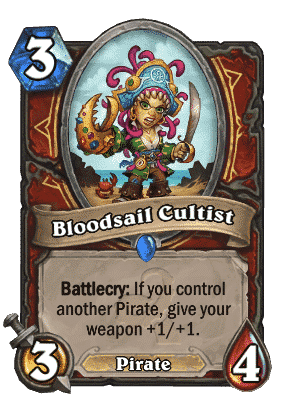
Pirate Warrior is one of Wild most iconic and established Aggro decks. The deck relies on minion pressure from Pirates and combine them with high damage weapons to finish off the opponent. Ancharrr is often the main draw engine, but the deck usually doesn’t need draws to finish its job.
Tried and true, this deck just refuses to die. Pirate Warrior once again cements itself as one of the best decks in the format after receiving immense support in Stormwind and finding itself in a meta without Reno decks. Raid the Docks has shifted the curve extremely low, encouraging players to take advantage of one-cost Pirates to get Cap’n Rokara in play as rapidly as possible. The Juggernaut proves to be an incredibly effective value engine pumping out pressure every turn until your opponent inevitably runs out of answers.
Where the deck struggles, however, is against decks such as Odd Questline Hunter and Questline Warlock. Both decks are full of removal/counter-pressure, with a clock that barely outraces Pirate Warrior. The huge downside of losing against Warlock pushes Patches and Co. outside of Tier 1. However, for just about any other matchup, it’s hard to go wrong with this heavy hitter. Due to the combination of lightning-fast aggression and inevitability to back it up, Pirate Warrior finds itself comfortably seated as one of the big winners of United in Stormwind.
The latest rounds of nerfs/buffs have yet to be revealed, but the potential ban of Seeds can only mean good things for Pirate Warrior. With the one truly terrible matchup gone, Pirate Warrior can take over the meta the way Odd Rogue once did: with weapons and consistency.



Odd Questline Hunter
Ranked: 5
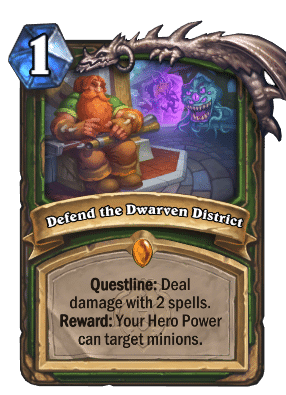
Odd Questline Hunter is a Control-Combo deck that synergizes with cheap 1 and 3 cost damage spells to progress the questline. Those spells, in conjunction with the 3 damage hero power, make it Hunter’s version of Raza Priest, dealing out massive amounts of damage and capable of ending the game much earlier than its predecessor.
Odd Questline Hunter is the Stormwind meta’s version of a “control deck”. Using spells like Wound Prey, On The Hunt, and Rapid Fire, this deck is capable of massive amounts of board control and preys on the many aggro decks in the format. The rest of the deck is filled with card draw (with a tradeable package often included), more expensive burn spells, and synergistic cards that work well with the upgraded hero power (namely Aimed Shot and Toxic Reinforcements). Beardo is also a common inclusion in Odd Questline Hunter lists, being able to reward the player by allowing them to combo off a turn or 2 early. Another common tech card is Rustrot Viper, providing answers to Warlock’s Rod and Pirate Warrior’s Ancharrr, while being a redraw in the late game.
The current iteration of the deck does have a few weaknesses, namely in highlander decks (whenever those come back into the meta) and decks that can outarmor/outheal the Hunter (Questline Druid, Quest Combo Seedlock). Besides those matchups, Odd Questline Hunter looks poised to stay a meta staple for a very long time.
With the nerfs and buffs looming on the horizon, we’re beginning to picture how Odd Hunter will fare after Warlocks go away. Hunter has good tech options against both Aggro and Control, which means it can be a force to be reckoned with. However, it’s much easier to tech against. If Hunters are ever the problem, a single Robes of Protection or Mindbreaker can change that.


MID
Malygos Druid
Ranked: 6
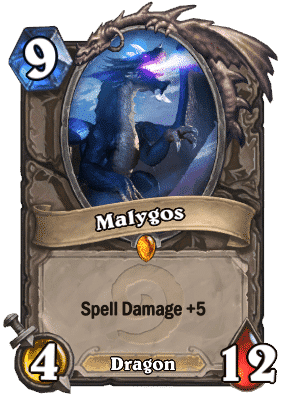
Malygos Druid is a combo deck that takes advantage of Druid’s impressive defensive package to hold out against aggressive opponents until it can play Celestial Alignment. Once Alignment has been played, the opponent has at most one turn before an onslaught of card draw, spell damage, and big minions decimates their board and face.
Although Malygos Druid has received no significant tools for United in Stormwind, Druid’s tried and true defensive package (Ferocious Howl, Oaken Summons, Spreading Plague) and rampant mana cheat enabled by celestial alignment/Lady Anacondra are holding steady in this aggro-infested meta. Injured Marauder is devastating to any aggressive opponents once it comes into play, and Escaped Manasaber provides the mana cheat to combo on the turn Celestial Alignment is played, leaving opponents with no opportunity to abuse the mana cheat it provides. If Swipes and Ultimate Infestations are not enough to kill its opponents, the oppressive boards left behind after combo turns provide enough pressure for Druid to succeed.
Celestial Druid highrolls can rarely be beat; however, the main challenge this deck faces is getting there. The plethora of 7-10 cost cards can quickly become bricked against aggro opponents, the deck runs no tools to deal with giants, and failing to draw Celestial Alignment in time represents a death sentence for Druid in a wide range matchups. Due to these consistency issues, we place Malygos Druid at Tier 2 in this meta report.


Ignite Mage
Ranked: 7

Ignite Mage is a combo deck centered around its newly-introduced namesake spell, which is shuffled back into its owner’s deck with +1 spell damage each time it is played. With Sanctum Chandler and two Sorcerer’s Apprentices in play, Mages can cast this spell infinitely and deal as much damage as the game’s turn timer allows.
In the past year and a half, Blizzard has nerfed Open the Waygate, Evocation, Refreshing Spring Water, and Incanter’s Flow. However, as long as Sorcerer’s Apprentice can reduce spells to 0, combo mage will find a way into the wild meta. Beyond Ignite itself, the introduction of Hot Streak represents a major boon to both Ignite and APM mage, allowing them to cheaply copy key minions with Molten Reflection and activating Sanctum Chandler’s draw effect. In the current meta, Ice Block gives Ignite Mage reliable wins against Questline Warlocks and Alignment Druids, and the mana cheats provided by Conjure Mana Biscuit and Elemental Evocation give it the chance to scam even the most aggressive of opponents.
While Ignite Mage boasts a reliable win condition and incredible highroll potential, its glaring weakness to aggro (notably Shadow Priest, Pirate Warrior, and Odd Hunter) have led us to rate it as mid-tier 2 in the current meta. Although we feature lists from both spell-based and minion-based versions here, minion-based lists have become favored at high legend due to their increased consistency on combo turns.
It’s announced that buffs to the Mage class will roll out soon, and it’s interesting to see how this will affect Ignite Mage. The deck is almost fast enough to compete against Aggro now, but the Flow nerfed has kept it in its place. Another slight buff can mean Ignite Mage will be hot for the running of the top of the meta post-patch.


LOW
Mecha’thun Druid
Ranked: 8
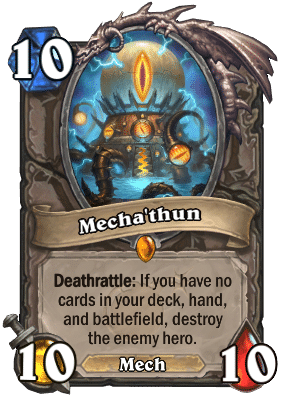
Mecha’thun Druid relies on the same early removal and mana cheat engines as its spell damage-based cousin. However, it seeks to end the game with Mecha’thun’s deathrattle effect, providing inevitability to an already-powerful combo deck. Celestial Alighment allows the Druid player to draw the entire deck and drop the combo in a single turn.



Pillager Rogue
Ranked: 9
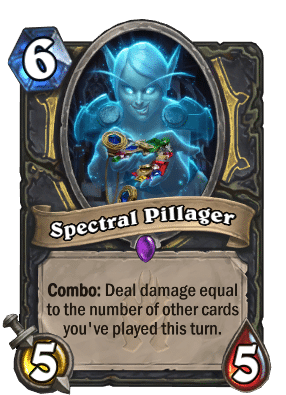
Pillager Rogue is a combo deck that uses Spirit of the Shark, Spectral Pillager, and various mana cheat cards to kill opponents in one turn. Shroud of Concealment and Elven Minstrel give the deck consistency by tutoring key minions. The deck can go off as early as Turn 4, or Turn 3 with the Coin.
Pillager Rogue appreciates Warlock’s dominance as it is one of the few decks that goes positive into the class. Giants Questline Warlock lacks answers to a stealthed Spirit of the Shark, making it easy for the rogue to win before they are outpressured. Combo Questline Warlock has multiple answers for a shark, but its slower win condition gives time to set up a kill from hand.
Much like most other combo decks, Pillager Rogue is held back by its poor matchups into aggressive decks. Questline Hunter naturally devastates the deck with Flare to remove Evasion and Spirit of the Shark. Aggro Priest floods the board early and quickly finishes the game with Voidtouched Attendant, Mind Blast, and Mindrender Illucia. Pirate Warrior is less explosive but the many cannon shots can kill through Cloak of Shadows and makes it challenging for the rogue to stick a Spirit of the Shark. SI:7 Extortion is a helpful new tool to remove key threats, but it doesn’t slow the aggressive decks nearly enough.


TIER 3

*Galakrond Warrior is supposed to be Odd Warrior, the image will be updated soon!
HIGH
Overload Shaman
Ranked: 10
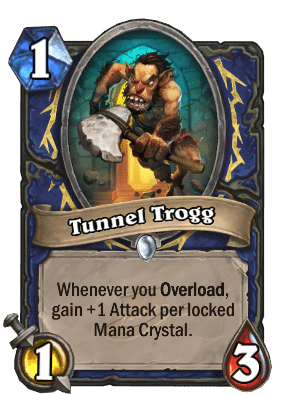
Overload Shaman is an aggro deck that aims to take the board early and finish off the opponent with huge amounts of burst damage. While shaman normally has limited card draw, Spirit of the Frog negates this weakness by allowing the player to draw a series of burn spells and play them in a single turn. Alternatively, Tunnel Trogg can also be a secondary win condition. Its presence necessitates immediate removal by the opponent, or Overload cards like Lightning Bloom can rapidly increase its attack to dangerous levels.
Overload Shaman (formerly known as Aggro Shaman) has become much better this expansion. With the introduction of Overdraft, the deck can negate any tempo loss by Overload incurred on the next turn. This card really shines in conjunction with Perpetual Flame, another new addition that can clear a board and deal massive burn damage with the very low cost of 2 mana. It is this synergy that allows Overload Shaman able to have a fighting chance against aggro. The copious amounts of burn damage also allow it to dominate the Questline Warlock matchup, whose health is usually low enough to enter into burn range. It is this advantage against the most popular deck that allows Overload Shaman to be viable in this meta.
However, Overload Shaman also has distinct weaknesses, one of which is the lack of openers. Without any 1-drops besides Tunnel Trogg, the opponent can comfortably execute their gameplan in the first few turns when the Frog isn’t drawn. The over-reliance on burn damage instead of minion damage also means that it cannot beat decks that gain armor or heal, such as Questline Druid. Finally, Spirit of the Frog and Lightning Bloom are essential for the deck to chain burn spells and tutor its important 1-mana spells. The lack of draw other than Spirit of the Frog means the deck lives or dies by the card. Due to this inconsistency, we can only put Overload Shaman on top of tier 3.



Odd Questline Druid
Ranked: 11
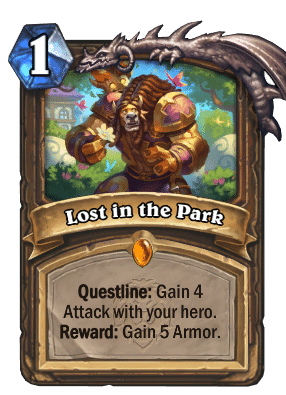
Odd Questline Druid offers a surprising blend of defensive armor gain and offensive face damage, making it one of the most unique decks in the format. It naturally plays armor gain cards like Gnash and Secure the Deck to complete the Questline as soon as possible, killing the opponent in the process.
Odd Questline Druid does what a nice deck does and stays where a niche deck stays. The deck has carved itself a decent spot in the meta, winning against Aggro decks that have neither the burn to chip through its armor nor the taunts to defend themselves. However, when facing of against the boogeyman that is Questline Warlock, the deck falls apart. It cannot assemble enough damage in time, and the armor gain is next to meaningless once you run out of steam.
It is unlikely that the deck will improve its position once the nerfs and bans roll out. It will still be great into Aggro, but lack any real Bite into Control decks that should come back. In a sense, Questline Druid is the new Even Shaman, and the time for Even Shamans have long since passed.

Tax Paladin
Ranked: 11

Tax Paladin is a Midrange deck that plays some of the most annoying 2 drops in the form of Far Wach Post and Nerub’ar Weblord to lock the opponent out of the game. Call to Arms can effectively cheat these minions out, while early secrets can prevent a timely board clear. The main goal of the deck is to deny board interaction while it chips away the opponent’s health with its pesky 2 drops.
It’s a sad time to be a Paladin player, as some of their strongest Midrange options find themselves in an increasingly hostile meta. However, unlike Odd Paladin and Handbuff Paladin, Tax Paladin capitalizes on the unique current lansscape to ply its trade, doing what it does best: denying opponents their gameplan. Plenty of key cards in this meta are 1-costed and battlecries, like Kobold Librarian and N’zoth’s First Mate. Slowing them down a couple turns is usually enough for the Paladin to build a board that cannot be taken back.
A lack of Control decks allow the Tax Paladin to go all-in on the boardlock gameplan. Noble Mount has seen some play as a way to protect Nerub’ar Weblord against removals like Spirit Bomb. Mindbreaker and Robes of Protector can be a real nuisance for Odd Hunter. However, if the deck can’t establish an early advantage, its plan is effectively ruined. A decent matchup against Warlocks, Warriors, and Hunters put it at the top of Tier 3, it you really need the right tech cards and opening hand for the right adversary.



Even Warlock
Ranked: 13
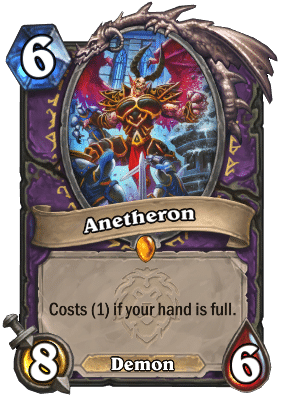
Even Warlock is a deck that capitalizes on the one-mana hero power granted by Genn Greymane as a trade-off for playing only even-costed cards. It damages itself so it can play powerful minions like Mountain Giants and Anetheron early on, smashing its opponent for 8+ damage a turn.
Even Warlock proves that the nerf to Flesh Giant barely does anything for Wild, as even a deck that thrives from playing cheap Giants can discard Flesh Giant for another card in its abundant arsenal. If anything, the nerf to Battleground Battlemaster can be seen as a buff, as the Even Warlock player has found itself a respectable burst option.
Even Warlock has massively upped its consistency with the addition of Anetheron and Goldshire Gnoll/ Encumbered Pack Mule ensures the hand can always be filed, while Dark Alley Pact and Spicy Bread Baker provide much-needed defensive options. The deck is so well-supported and it’s a shame it loses so hard to fellow Questline Warlock. But maybe Even Warlock’s time is coming soon. If we are to pick a deck which might surprise you after the nerfs, this is it.


Cute Warlock
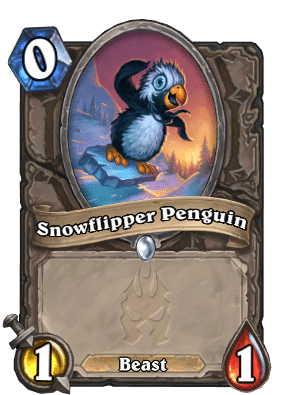
Cute Warlock is a fast token deck that got its name from playing ‘cute’ 0-mana cards. The goal of the deck is to offload its hand as quickly as possible and make early boards that are impossible to clear using Hobgoblin, Grim Rally, and Wicked Whispers. The deck typically plays a mini Discard package which allows it to refuel and finishes off the game.
Most token decks have really struggled in a meta where everything is faster than them, but one still retains its neck-breaking speed that can steal any game. Cute Warlock can often produce impossible boards before their opponents can assemble theirs, and some boards are too tough for even Odd Questline Hunter to remove. Of course, consistency is still a big issue with this deck, which means that it might never be good enough to truly be considered a counter to anything at the moment.
Cutelock didn’t gain anything in United in Stormwind, but is still a strong and engaging deck to play. If you want to play Warlock and not be called names, this might be the deck for you.

TIER 4
CLASS META RANKING
Note: The score for Mage should be 100 after accounting for APM Mage.
Deck Codes (other Decks)

































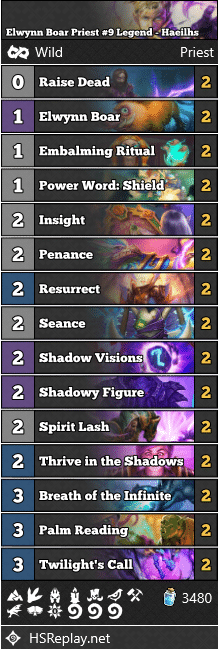
















CONTACT
SmellyHuffer
Do you want to have your work featured on Hearthstone-Decks.net? Email us at neon31HS@gmail.com, and we’ll talk! Also, feel free to join our Discord, or follow us on Twitter or Facebook. You can also support us on Patreon!
Submit your Top 500 Legend Build, be seen by thousands of people!





